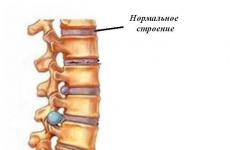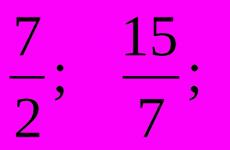Abstract of a drawing lesson for the Day of Cosmonautics. Abstract of the OOD in the senior group for artistic and aesthetic development (drawing) on the topic “What did the cosmonaut see from the rocket? Manuals and materials
Abstract of a lesson in fine arts in the senior group
"MYSTERIOUS SPACE"
Software content: Using unconventional painting techniques.
Target: to introduce children to a new way of drawing - wax crayons and watercolors.
Tasks:
1.
Teach children to depict a rocket in flight, conveying in the drawing the characteristic features of a spaceship, its appearance in airless space, draw a starry sky, thinking over the composition and content of the drawing, using the foreground and background space.
2. To fix the techniques of drawing with colored wax crayons on a white sheet of paper, followed by covering the entire sheet with watercolors.
3. To instill in children respect for people whose work is related to space exploration. To instill love and a sense of pride in the country.
Integration of educational areas:
"Artistic creation", "Cognition", ICT.
Materials for the lesson : Wax crayons, watercolors, thick brushes, large paper, jars.
Course of the lesson
Children enter the hall
Educator
: We gathered in the hall today to talk about the first manned flight into space. It happened on April 12, 1961. This man was Yuri Alekseevich Gagarin. Humanity has long dreamed of flying into outer space, the mysterious space attracted people, called to look into it and solve its riddles.
During the teacher's story about space, the presentation "Cosmos" is shown
Almost a hundred years ago, a simple teacher, Konstantin Eduardovich Tsiolkovsky. He was very fond of observing the stars through a telescope and studying them. There are many different planets and stars in outer space, which are combined into constellations and the milky way. And Konstantin Eduardovich Tsiolkovsky conceived to design such an aircraft that could fly to some planet. Unfortunately, he didn't have the opportunity to build it.
And only many years later, a group of scientists led by designer Sergei Pavlovich Korolev made the first space satellite and launched it into outer space.
Then they decided to repeat the flight, but with animals and sent two husky dogs into space: Belka and Strelka, which returned safely to Earth.
And only on April 12, 1961, the dream of mankind came true. For the first time in the world, cosmonaut Yuri Alekseevich Gagarin successfully flew around the Earth on the Vostok spacecraft.
Outdoor game "Raketodrom"
Children lay out the hoops in a circle, run freely around the hoops and say the words:
Fast rockets await us
For flying around the planets.
Whichever we want,
We'll fly to this one!
But there is one secret in the game -
There is no place for latecomers!
The teacher removes several hoops. The game is repeated until one hoop remains.
Educator:
I invite you to dream and paint a picture "About your flight on a rocket to the stars or planets."
But first, let's remember what space objects we can meet in space (work with an interactive whiteboard).
But before we start drawing skillful fingers we need to knead:
Finger game "Planets of the Solar System"
In order, all the planets will be called by any of us:
One is Mercury, Two is Venus, Three is Earth,
Four - Mars. Five - Jupiter, Six - Saturn,
Seven - Uranus, Eighth - Neptune,
And after him already, then,
And the ninth planet
Called Pluto.
Children sit down at the tables, the teacher explains the stages of work, and starts drawing
STAGE 1 The rocket flies to the stars
We draw with wax crayons of different colors. First, start drawing the rocket, its steps, and the nose.
STAGE 2 Stars, comets, planets.
Next, we depict any planets of the solar system.
STEP 3 Outer space
After the stars are drawn, the children cover the entire sheet of paper with watercolors using a paintbrush. Outer space can be black, blue, purple, or with a transition from one color to another. From the areas covered with wax, liquid paint rolls off, and an image of the starry sky is obtained.
Analysis:
So our lesson has come to an end. I hope that you have learned a lot of new and interesting things. Guys, tell us about your work, what interesting things have you drawn? - Answers and stories of children.
Outcome:
Astronauts are people who test space technology and work on it in Space. The first cosmonaut of the Earth was ... Yuri Alekseevich Gagarin. He returned to Earth safe and sound, and scientists decided that man can live and work in Space. Now cosmonauts spend many months, and spend more than a year at space scientific stations. Astronauts are courageous people. They live and work in unusual conditions - in zero gravity, in a silent and dangerous Space. There are still many blank pages in the history of astronautics. And maybe some of you will have to fill them in.
Let's play the game "Cosmonauts"
One or two, there is a rocket - children raise their hands up
Three or four, take off soon - spread their arms to the sides
To fly to the sun - circle with your hands
Astronauts need a year - he takes his cheeks with his hands, shakes his head
But dear, we are not afraid - arms to the sides, body tilts to the right and left
After all, each of us is an athlete - bend our elbows
Flying over the earth - spread their arms to the sides
Say hello to her - raise their hands up and wave goodbye.
Teacher: The path is finished, the rocket has landed, in front of you forests and fields.
Hello, our home planet! Hello, our dear Earth!
Abstract of the GCD in the senior group on drawing on the topic
"What did the astronaut see from the rocket?"
Purpose: Creation of a social developmental situation by encouraging to portray fantastic stories.
Material: white sheets of A4 paper, gouache, brushes of different sizes, napkins, presentation
Preliminary work: conversation "Holiday - April 12" (Yuri Gagarin, the first animals in space, solar system, planets)
Stroke:
Organizing time
Guys, we received a message from space, in which we are asked for help. Want to know who needs help and why? Guess the riddle
In a hat with a round brim
And knee-length pants
Busy with different things
Just learning to him is too lazy
Who is he quickly guess
What's his name? (Dunno)
Main part
He flew to the moon and still has not returned. Do you get scared if you find yourself alone in unfamiliar places?
Want to help Dunno return to earth? How can this be done?
What can you fly to the moon?
Where can we find the rocket?
But without knowledge about the structure of the solar system, they will not send us into space? Can you help me figure it out?
What's in the picture? (solar system)
What's at the center of the solar system? (Sun)
How many planets orbit the sun? (9)
Listen to the poem and remember the names of the planets
All planets in order
Any of us will call:
First-Mercury
Second-Venus
Third-Earth
Fourth-Mars
Fifth-Jupiter
Sixth-Saturn
Seventh-Uranus
Behind him is Neptune
He is the eighth in a row
And after him only later
And the ninth planet
Called Pluto
So we remembered all the planets
What is the name of the planet behind the earth? (Mars)
How can the inhabitants of this planet be called? (alien, alien, martian)
Thank you for helping me remember the solar system. Now we will definitely be sent into space
You are ready? Got ready
Fizminutka
Climb into the rocket (Marching in place)
And we say goodbye to the Earth. (Right hand up, waving)
These open spaces call us, (both hands forward, join palms)
Let's fly into space with an arrow. (Spread your arms to the sides)
The rocket rushes straight into the sky! (Arms extended overhead, fingers joined (rocket)
The stars light the way. (Do "salute" with your fingers)
Maybe on Saturn somewhere (Clap their hands)
Someone meets us.
We will go out into outer space - (Marching in place)
Just don't forget the spacesuit!
How do you want to go to Earth! (Sit down)
All - back! On the way back! (Arms extended overhead, fingers joined (rocket)
So Dunno has landed on the ground with us
Why is Dunno sad?
She wanted to show her friends what she saw in space, but she can't draw
Are we sorry, can we help Dunno?
Nikita, what should I draw? (What was seen in space from a rocket)
Practical work
Guys, first, what do you think should be drawn? (base, space)
What color will we paint space? (blue, purple)
While our paper dries up, we will rest (a physical minute for the eyes)
Now what are we going to draw? (what was seen from space)
Outcome
Dunno is happy and thanks you for your help, he is already telling his friends about his journey and will also show your drawings. Dunno gives each of you a star for your help
April, 2nd week Lexical topic "Space". Sound [eh]. Letter Ee
Correctional educational goals. Formation of ideas about space, space exploration by people, the work of astronauts. Expanding understanding of the importance of adult labor. Expansion, refinement and activation of the vocabulary on the topic "Space" (space, astronaut, ship, rocket, station, porthole, satellite, flight, planet, star, orbit; first, space, orbital; master, fly, launch). Improving reading skills.
Correctional and developmental goals. Development of verbal communication skills, coherent speech, visual perception and attention, thinking, creative imagination, general, fine and articulatory motor skills, coordination of speech with movement.
Correctional and educational goals. Formation of skills of cooperation, interaction, independence, initiative.
Equipment. Magnetic board, subject pictures on the theme "Space", a picture by V. M. Karatay "Construction of a space station" (1 All work is good. For children about professions, - SPb., CHILDHOOD-PRESS, 2005.), notebook No. 1 according to the number of children, container with pencils, flat images of stars with words and rockets written on them, small object pictures with the sound [p] in their names, a ball.
Preliminary work. Consideration of pictures in any children's encyclopedia or slides with images of the starry sky, the Moon, the Milky Way, some constellations, a conversation on the topic "Space" in a lesson on the development of speech. Carrying out the game "Cosmonauts" in the center of role-playing games. Learning the Rocket exercise. Formation of cognate words to the word star in individual lessons with a speech therapist.
Course of the lesson
1. Organizational moment. [Development of skills of syllabic analysis of words. Announcement of the topic of the lesson.]
The speech therapist invites the children into the office, greets them and invites them to get ready for the lesson. There is a subject picture on the table in front of each child.
Speech therapist. Stand near the chairs, look at your pictures. The one who will name his picture and divide its name into syllables will sit down.
1st p e ben o k. Ra-ke-ta. There are three syllables in this word.
2nd child. Satellite. There are two syllables in this word.
3rd child. Astronaut. There are three syllables in this word.
4th child. Moon. There are two syllables in this word.
Speech therapist. Well done! You completed the first task quickly and correctly.
1. Consideration of the painting "Building a space station" and a conversation about it. [Expansion, clarification and activation of the vocabulary on the topic "Space". Development of dialogical speech.]
The speech therapist places a picture on a magnetic board and draws the attention of children to it.
Speech therapist. Look at the painting called Space Station Construction. What and who do you see on it?
Children. We see the space station and astronauts.
Speech therapist. Right. This is truly a space station. It is called orbital because it is in Earth's orbit and moves around the Earth at a tremendous speed. The cosmonauts left the orbital station into open space and are assembling new equipment. They need it for space exploration. What else do you see in space?
Children. We see the Earth, the Moon and many stars.
Speech therapist. What can you say about the Earth? Which Earth?
Children. Blue, distant, beautiful.
Speech therapist. And what is the moon?
Children. Small, cold, round.
Speech therapist. What stars do you see?
Children. Big, shiny, bright.
Speech therapist. What kind of job do you think astronauts have?
Children. Difficult, interesting, important, dangerous.
Speech therapist. Right. Astronauts do a very important job indeed. Thanks to this work, science and technology are developing on Earth.
The speech therapist removes the picture.
3. Guessing riddles. [Development of coherent speech, thinking.]
Speech therapist. Now try to guess my riddles. Which station is faster than any train?
Children. Orbital.
Speech therapist. Why do you think so?
Children. She has a very high speed.
Speech therapist.
The coals are burning -
You can't get it with a scoop.
You can see them at night
And not to see it during the day.
What's this?
Children. These are the stars.
Speech therapist. How did you guess?
Children. The stars burn brightly, but they are not visible during the day.
Speech therapist. How smart you are! Well done!
4. Work in notebook No. 1. (Development of fine motor skills. Prevention of writing disorders.)
The speech therapist distributes notebooks to children, puts a container with pencils on the table.
Speech therapist. Take a look at the page on the left. What do you see?
Children. This is a rocket and a satellite.
Speech therapist. Take any colored pencil. Trace the rocket along the contour, and then color it.
Children carry out the task. The speech therapist evaluates their work, and then removes notebooks and pencils.
5. Mobile exercise "Rocket". [Coordination of speech with movement. Development of creative imagination.]
The speech therapist invites the children to come out onto the carpet and suggests doing a familiar exercise.
And now we are with you, children,
Marching in a circle.
We fly away on a rocket.
Get up on your toes
Rise on their toes, pull their hands
up, closing them.
And then hands down.
They put their hands down.
One, two, reach out.
Stretching up again.
Here is a rocket flying up!
Run in circles on tiptoes.
V. Volina
6. Exercise "Who is this?" [Clarification of the vocabulary on the topic "Professions".]
Speech therapist picks up the ball.
Speech therapist. Now I want to know if you know very well what representatives of different professions do. I will say what a person does, and you will name his profession. Teach children.
1st child. Teacher.
Speech therapist. Healing people.
2nd child. Doctor.
Speech therapist. Drives the train.
3rd child. Driver.
Speech therapist. Explores space.
4th child. Astronaut.
Speech therapist. Well done! You have coped with this task of mine.
7. Ball game "Family of words". [Improving the grammatical structure of speech (the formation of one-root words).]
Speech therapist. Let's play ball and form the words of one family to the word star. Sit on the carpet. Let's roll the ball to each other. How can a star be affectionately called?
1st child. Asterisk.
Speech therapist. If there are many stars in the sky, what is it?
2nd child. Starry.
Speech therapist. What can you call a ship that flies to the stars?
3rd child. Starship.
Speech therapist. What is the name in fairy tales of the wizard who determines the future by the stars?
4th child. Astrologer.
Speech therapist. Fabulous! You made me happy.
8. The game "Who will fly in the rocket." [Automation of the pronunciation of the sound [p] in game activities.]
The speech therapist removes the ball and places flat images of a rocket with cut out portholes and stars on the carpet, and scatters small object pictures on the carpet.
Speech therapist. Let's send fairy-tale heroes into space. Fix a picture in the window and tell who will fly in a rocket to Mars and Venus. Watch the pronunciation of the sound [p].
1st Rebenok. Cheburashka will fly to Mars and Venus.
2nd child. Buratino will fly to Mars and Venus together with Cheburashka.
3rd child. Cheburashka and Buratino will take Little Red Riding Hood with them to Mars and Venus.
4th child. Together with Cheburashka, Buratino and Little Red Riding Hood, Santa Claus will fly to Mars and Venus.
Speech therapist. Well done. The rocket went to Mars and Venus.
9. Reading words with passed letters. [Improving reading skills.]
The speech therapist removes the image of the rocket.
Speech therapist. Take one star from the carpet and read the words written on them.
1st child. Space.
2nd child. Satellite.
3rd Rebenok. Cosmonaut.
4th rebenok.Cosmonauts.
Speech therapist. Well done! You read great!
10. End of the lesson. [Assessment of children's work.] The speech therapist asks the children to remember what they did, list the games and tasks, and then assesses the work of each child.
Sections: Working with preschoolers
Tasks.
Preliminary work. Conversation with children about space: space bodies, flying saucers, aliens, about the Universe, stars. Examination of slides with paintings by N. Roerich, atlases. Drawing in free activity. Reading the fairy tale "The Little Prince" by Exupery, stories and poems about space.
Materials and equipment.
Water-color paints, wide brushes, No. 3; wax crayons, glasses of water, napkins, A-4 paper. Audio tape recorder, space music, DVD, pictures on the space theme, slide show of pictures about the space of children from other cities of Russia.
Tables, chairs correspond to the age characteristics of children, the light falls from the left side. TV with DVD, for watching slides at the level of 1.5-2 meters from the children.
Implementation of educational areas.
Artistic creativity,
Communication,
Cognition,
Health,
Reading fiction.
Activities: productive, reading fiction, communicative.
Course of the lesson
Children become a semicircle near the teacher. Are located conveniently so as not to interfere with each other
Educator: Our lesson is called "In the world of space."
Children. I have a cryptic letter for you. Let's see who sent it and what it says. The letter was sent by aliens, and they ask you to complete several tasks: first - to guess riddles; the second is to draw pictures about space.
So the first task.
The teacher makes riddles to children.
The grain was scattered at night,
We looked in the morning - there is nothing.
What's this? (Stars)
Big sunflower in the sky
It blooms for many years
Blooms in winter and summer
And still there are no seeds. (The sun)
What bucket
Don't drink, don't eat
Do they just look at him? (Constellation Ursa Major)
At the grandmother's hut
Hanging bread crust.
The dogs are barking
They can't get it. (Moon)
Educator: Well done, they guessed all the riddles correctly. We completed the first task.
Second task. Aliens are asking you to draw pictures.
Guys, you already know a lot about space from your previous activities and entertainment.
Would you like to paint fantastic pictures about space? (Yes)
The teacher invites children to be creative.
Before getting started, think and imagine what you would like to draw. Give your painting a title.
The teacher asks 1-2 children about their plan.
For example: I would like to draw a flying saucer, aliens, etc.
Children get to work.
At the 11th minute, gymnastics for the eyes: "To the moon" A. Gridneva.
“We respect the elders of all (look up)
We do not offend the younger ones (look down)
We walk and read (movement to the right - to the left)
We dream of flying to the moon ”(looking up)
Then the children continue to draw.
Throughout the lesson, the teacher provides assistance if needed. Monitors the posture of children.
Educator: Well, all the work is ready. We have completed the second task as well. Let's see how beautiful, bright, colorful, interesting, unusual your works turned out to be.
The teacher invites children to briefly analyze their work
Anya, tell us about your drawing. What have you drawn? What is the name of your painting?
Educator: Guys! Ksyusha has learned and wants to tell a poem called "The stars are shining, they are shining ...".
The stars are shining, they are shining ...
Sometimes I can't even believe
That the universe is so big.
Into the tarry black sky
I look, forgetting everything in the world ...
Still, it's great
That the stars shine for us at night.
And now, I suggest you look at slides of drawings by children from other cities of Russia.
Our lesson is over. Thank you.
After the lesson, the drawings are arranged in the form of an exhibition in the lobby of the preschool educational institution for general viewing.
Synopsis of the activity class in the senior group "Space landscape"
Goals:1. Consolidate children's knowledge of space.
2. To acquaint them with "space painting" using the "emerging drawing" drawing method.
3. To develop artistic and imaginative thinking, imagination, a sense of composition. To bring up independence, observation, accuracy.
Preliminary work: Conversation about the solar system, about the Universe, about the discoverers of space. Examination of reproductions of paintings: A. Sokolov "Before the start", "Start", "On Mars" A. Leonov "Orbital station", "Lunokhod-1", "Planet in the region of the gas nebula", A. Plotnov "Goodbye, earthlings ! ".
Materials (edit): Presentation for the lesson, sample work, sheets of white paper, wax crayons, watercolor.
Course of the lesson:
Organizing time:Distant stars in the sky are burning
They call smart guys to visit
Getting ready for the road is not long for us
And now we are ready to fly!
The announcer will command: "Attention, take off!"
And our rocket will rush forward
They will blink goodbye and melt away
The golden lights of the beloved Earth.
Today we will go on a space trip. Astronauts cannot always talk, sometimes they have to communicate with each other without words. Let's try to transmit signals to each other silently, by shaking hands. Stand in a circle, hold hands. The signal will go now from me to the right or to the left. You have to feel it and pass it on to the next one. When the signal returns to me, I will say: the signal is received, ready to fly. (signal transmission is repeated several times, each time a new presenter is selected).
Main part:
Educator: What planet do we live on?-What are the names of the people on this planet? (Earthlings)
-Now we will go into space. Who will we be in flight (Astronauts, astronauts)
- Where do the spaceships start? (From the cosmodrome)
- What will we wear when we fly into space? (Spacesuit, helmet, special shoes)
Educator: Attention! Prepare for flight. Countdown: 5,4,3.2,1 - start!
Educator: We are in a state of weightlessness, How do you understand this word?
Children: This is a state when astronauts and things weigh nothing and float in a spaceship.
Educator: Look through the porthole. What do you see there?
Show of slides of the planets of the solar system and is accompanied by the reading of a poem.
First meets solar storms
Elusive, little Mercury.
The second, behind him, flies Venus
With a heavy, dense atmosphere.
And the third, the carousel is spinning,
Our earthly cradle.
Fourth - Mars, the planet is rusty,
Red - orange most.
And then they rush, like a swarm of bees,
Asteroids in their orbit.
Fifth - Jupiter, very big
It is clearly visible in the starry sky.
Sixth - Saturn, in chic rings,
Charming girl, under the rays of the sun.
Seventh - Uranus, lay down like a lazy person,
After all, his long way is difficult.
Eighth - Neptune, the fourth gas giant
In a beautiful blue shirt dandy.
Pluto, Charon, ninths in the system,
In the darkness they pass the time in a duet.
The teacher asks what the children were able to see in distant space.
Children: planets, stars, comets, meteorites.
Educator: Now we will paint a "space landscape". (The teacher demonstrates a sample)
Algorithm for performing the work:
We select 3-4 main objects and draw them on a sheet with wax crayons, you can draw how stars of extraordinary beauty sparkle, comets rush, leaving a multicolored tail, planets circle in a circle around the sun, a spaceship went on a space expedition, etc.
Then we'll paint the background with watercolors. We paint over the entire sheet with dark paint so that all the stars and planets are clearly visible. We take purple or dark blue, burgundy paints and paint over the entire sheet with colored spots. Crayons show through against a dark background.
Educator: Then we will collect all the drawings and make a large panorama. It will contain both the Earth and the starry sky with spaceships, satellites, astronauts.
Phys. a minute
1,2,3,4 we walked around the place,
And now we are children,
We fly away on a rocket.
They rose on their toes,
Fast, fast, hands down
1,2,3,4 here is a rocket flying up!
And below the forest, the fields -
The earth is spreading out.
1,2,3,4 rocket landed on the ground!
Educator: Let's start independent work.
Lesson summary:
At the end of the lesson, the works are exhibited at the exhibition, the children exchange their impressions - which drawing they liked and why. The teacher notes successful work, encourages all children.
Abstract of a drawing lesson "Flight into space" (senior group)
Target : continue to introduce children to the holiday - DayCosmonautics.
Tasks :
1. Strengthen the skills of childrendraw a rocketflying intoouter space.
2. Raise interest in the holiday - the DayCosmonautics.
3. To develop aesthetic perception, memory, attention, speech.
Preliminary work : reading poems aboutouter space, making riddles, looking at illustrations aboutastronauts, planets,drawing spacein non-traditional techniques)
Materials (edit) : A4 sheets of black paper for each child, gouache paints, brushes, jars of water, napkins, illustrations aboutspace and astronauts, hoops of different colors for outdoor games, headbands.
Course of the lesson
Educator : Hello guys! Soon our whole country will celebrate a holiday - DayCosmonautics! April 12 - on this day a person first performedflighton a rocket around the globe! And the name of the firstcosmonaut - Yuri Gagarin... (showing illustrations aboutouter space, the firstastronaut) Today we will go tospace trip! You are ready?(children's answers) And now you can guess what we are going to take.
Wonder bird - scarlet tail.
Flew into a flock of stars.
Answer : rocket.
The teacher shows illustrations of different missiles andspaceships.
Children sit in a pre-built rocket made of soft modules.
Educator : Guess the riddle.
A man is sitting in a rocket.
He flies boldly into the sky,
And on us in his spacesuit
He is fromspace looks. Answer : astronaut.
Cosmonautsput on special clothes - a spacesuit.(showing illustrations.) Look how strong it is!
Let us put on our spacesuits and go toflight! (children put on headbands, close their eyes to the music and imagineflight.)
Educator : guys, we are in the openouter space, tell me what do you see?(children's answers) Distant planets seem to us to be luminous stars, look at the planets that have been photographed by scientists.(showing illustrations of the planets of the solar system) Now we'll play!
Outdoor play"Fast rockets await us"
Bygroupthe rocket hoops are deployed. In terms of their number, there are several less than those who play. Children join hands and walk in a circle within words :
Fast rockets await us.
For flying to planets.
Whichever we want,
On suchlet's fly!
But there is one secret in the game :
There is no place for latecomers!
After the last words, the children scatter and take places in"Rockets" (if there are many children, then you can sit in one rocket for two or three people) and take differentspace poses... Those who did not get a place in the rocket choose the most interesting and beautiful poses.astronauts... Then everyone is back in a circle, and the game starts over.
Educator : guys, we played with you, and now we will draw a rocket that makesspace flight. (showing ways drawing rocket , children draw)
Educator : and now we will have a little rest.
Physical education-game"Spacesuit astronaut »
Educator :
- Astronauts need a special space suit - a spacesuit... It protects the human body and allows breathing. We are also now inouter spaceand we're wearing spacesuits.
On the headastronauts helmet(head tilts and turns) .
The jumpsuit should be comfortable and not restrict movement.(turns and tilts of the body) .
Hands protected by gloves(rotation of the hands, clenching and unclenching of the hands) .
Bootsastronauton a very dense sole(walking in place, jumping) .
On the back, behind the shoulders, a knapsack with important devices and air tanks(raising and lowering the shoulders, inhale-exhale)
Children continuedraw.
Educator : Guys, what a fine fellow you are, what beautiful rockets you have! And it's time for us to return fromspace to earth! Take your seats in the rocket!(children sit down and go back to kindergarten to the music.)
Thank you for your attention!






